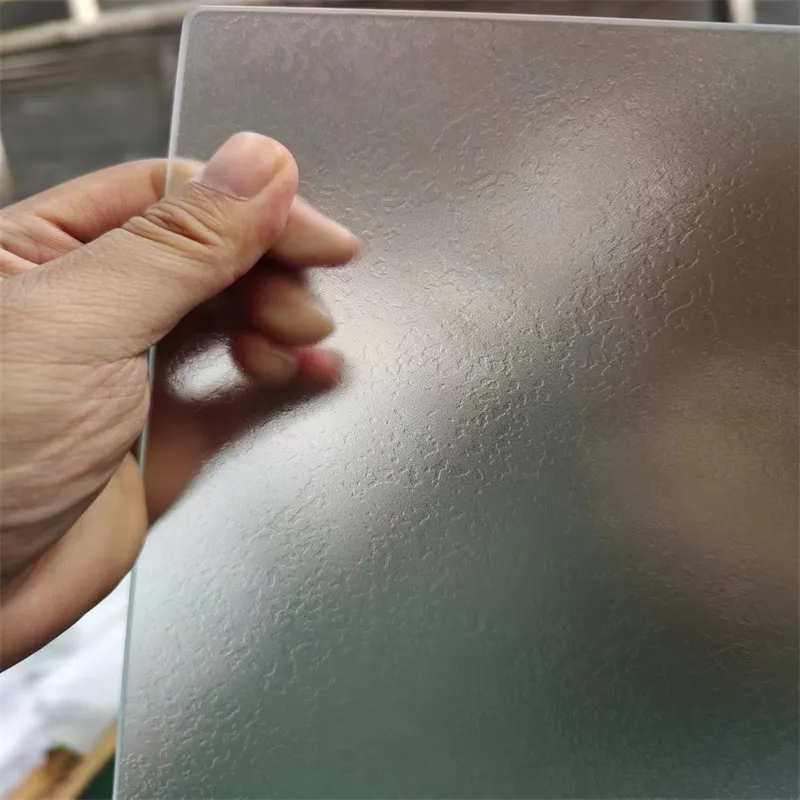Nov . 16, 2024 10:15 Back to list
float glass price
Understanding Float Glass Prices Factors and Trends
Float glass, a fundamental material in the construction and manufacturing industries, has become increasingly essential in recent years. Used predominantly for windows, facades, mirrors, and a variety of decorative applications, its pricing dynamics are influenced by numerous factors. Understanding the current trends and the forces that drive float glass prices is crucial for industry stakeholders, including manufacturers, builders, and consumers.
What is Float Glass?
Before delving into pricing, it's important to understand what float glass is. Float glass is produced by floating molten glass on top of molten tin, which creates a smooth, uniform surface. This manufacturing process results in a high level of clarity and is essential for applications where transparency is crucial. The quality and characteristics of float glass make it a preferred choice in various sectors, particularly construction and automotive.
Factors Influencing Float Glass Prices
1. Raw Material Costs The primary ingredients for float glass—silica sand, sodium carbonate (soda ash), and limestone—constitute a significant portion of production costs. Fluctuations in the prices of these raw materials can directly impact float glass prices. For instance, global mining regulations, environmental policies, and geopolitical issues can lead to supply constraints and price volatility.
2. Energy Costs The float glass manufacturing process is highly energy-intensive. Gas and electricity prices play a pivotal role in determining production costs. Changes in oil prices can significantly impact transportation costs as well, further influencing the final price of float glass products.
3. Market Demand Float glass demand is closely tied to the construction sector, which is sensitive to economic cycles. Expanding urbanization, increased residential and commercial construction projects, and a growing emphasis on energy-efficient buildings can drive demand. Conversely, economic downturns can lead to reduced construction activity, thus impacting float glass prices adversely.
float glass price

4. Technological Advancements Innovations in the production techniques and materials used in float glass manufacturing can lead to cost savings. Manufacturers that adopt cutting-edge technology may produce glass more efficiently, potentially lowering costs. However, the initial investment in new technology may influence pricing in the short term.
5. Global Trade Dynamics The international trade environment plays a significant role in float glass pricing. Trade tariffs, anti-dumping policies, and trade agreements can affect import and export dynamics, leading to price fluctuations in various markets globally.
6. Sustainability Trends Increasing pressure for sustainable practices is also influencing float glass prices. Recycling float glass reduces the need for raw materials and energy consumption, potentially decreasing costs in the long run. However, investments in recycling technologies and compliance with environmental standards may initially push prices higher.
Current Trends in Float Glass Pricing
As of late 2023, float glass prices have shown mixed trends. In some regions, prices have stabilized following a period of volatility due to supply chain disruptions experienced during the COVID-19 pandemic. However, with inflationary pressures and rising energy costs, there are concerns that prices may rise again.
Additionally, the push toward energy-efficient construction is driving demand for specialized float glass products, such as low-emissivity (Low-E) glass, which can also influence pricing structures. As consumers and builders increasingly prioritize sustainability, manufacturers are adapting their product offerings, potentially affecting overall market dynamics.
Conclusion
In summary, float glass is a vital commodity shaped by a multitude of factors ranging from raw material costs to technological advancements and global trade dynamics. As the market continues to evolve, staying informed about these elements and trends is essential for all stakeholders involved in the float glass industry. By understanding the factors influencing prices, businesses can make better decisions regarding procurement, pricing strategies, and investment opportunities in this dynamic marketplace.
-
Safety and Style with Premium Laminated Glass Solutions
NewsJun.24,2025
-
Reinvents Security with Premium Wired Glass
NewsJun.24,2025
-
Premium Float Glass Line for Modern Architecture
NewsJun.24,2025
-
Low Emissivity Glass for Energy-Efficient Architecture
NewsJun.24,2025
-
High-Performance Insulated Glass Solutions for Modern Architecture
NewsJun.24,2025
-
Elevates Interior Style with Premium Silver Mirror
NewsJun.24,2025
Related PRODUCTS














